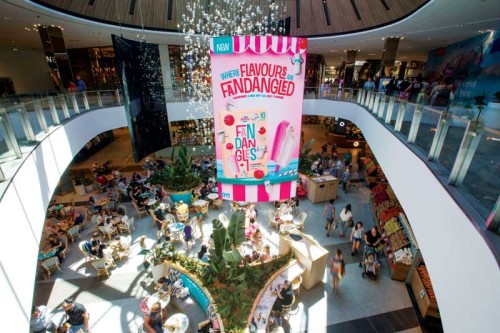Determining TCO
As purchasing a digital display is a major investment for most businesses, cost is just as important a consideration as suitability and performance. The more individual LEDs that are in the display—which depends on how many are in each pixel ‘cluster’—the higher its cost will be. Component costs include those for the mounting hardware, media players (if necessary), cabling and video wall control systems.
The total cost of ownership (TCO) will include not only the purchase of hardware, but also installation, maintenance and ongoing content creation. The labour costs for the installation will vary based on the number of components needed, the level of complexity and the time needed. If the space needs to be adapted to accommodate the display, for example, this may entail adding fixtures such as shades to control ambient light, enhancing wiring connectivity and reinforcing walls. There also may be business downtime for the client during these changes. With video walls and any other installations comprising multiple displays, calibration is essential to ensure consistent, uniform brightness and colour intensity across the entire display area.
Every digital signage system will incur some maintenance costs over time, but higher-quality products will offer a longer lifespan with fewer failures and less need for LED replacements. That said, preventative maintenance also affects TCO. Cooling equipment may be required, depending on the space’s heat restrictions. A stable power supply with strong grounding protection will offset the effects of thunderstorms or other harsh conditions.
Outdoor displays will require periodic cleaning to combat prolonged exposure to wind, dust and rain. Also, front-serviceable displays save on repair time by providing easier access for maintenance teams.

The location will determine display size, shape and weight restrictions.
Content creation software included with a display may involve licensing fees, paid subscriptions and/or training. Some clients prefer to outsource content creation to their digital signage providers, while others will take it in-house; the latter will need easy-to-learn, intuitive software that guides them clearly through the content creation process, provides templates and allows elements to be customized quickly.
Another factor affecting TCO is the warranty, the terms of which can mean the difference between a smart investment and a drain on resources. Without a comprehensive and fair warranty, the customer can incur a higher-than-anticipated TCO.
Manufacturers’ warranty terms for LED displays, for example, will vary based on the length of coverage (the standard is up to three years), the number of failures (i.e. the percentage of LEDs that must fail before the warranty
is executed), the effective date of coverage (i.e. after shipment, after installation or after the failure rate has been met) and the number of actual components covered.
Estimating ROI
Understanding TCO plays an integral role in estimating ROI. For customers following a digital out-of-home (DOOH) advertising model, of course, ROI will depend on the average DOOH revenue earned per day and the average gross profit margin. Other businesses will need to determine in their own terms how their investment will pay off. The U.S. Small Business Administration (SBA) estimates those using digital signage increase revenue by anywhere from 15 to 150 per cent. With that vast a spectrum, customers may need to prepare for a wide range of potential outcomes.
That said, digital signage has already proven it can provide a substantial competitive advantage at a fraction of the cost of other forms of mass communications. Displays with effective messaging get noticed across key demographics. According to audience measurement company Nielsen, 70 per cent of 18 to 24-year-olds say they are aware of seeing digital signage in the past year and 27 per cent of them took action based on its content.
Overall, companies using digital signage report it pays for itself within four to 18 months. While the advantages are clear, it is still important to give careful consideration to a range of factors first, so the customer will be satisfied with his/her investment.
Wes Funsch is vice-president (VP) of operations for NanoLumens, which manufactures a variety of LED digital displays. For more information, visit www.nanolumens.com.





